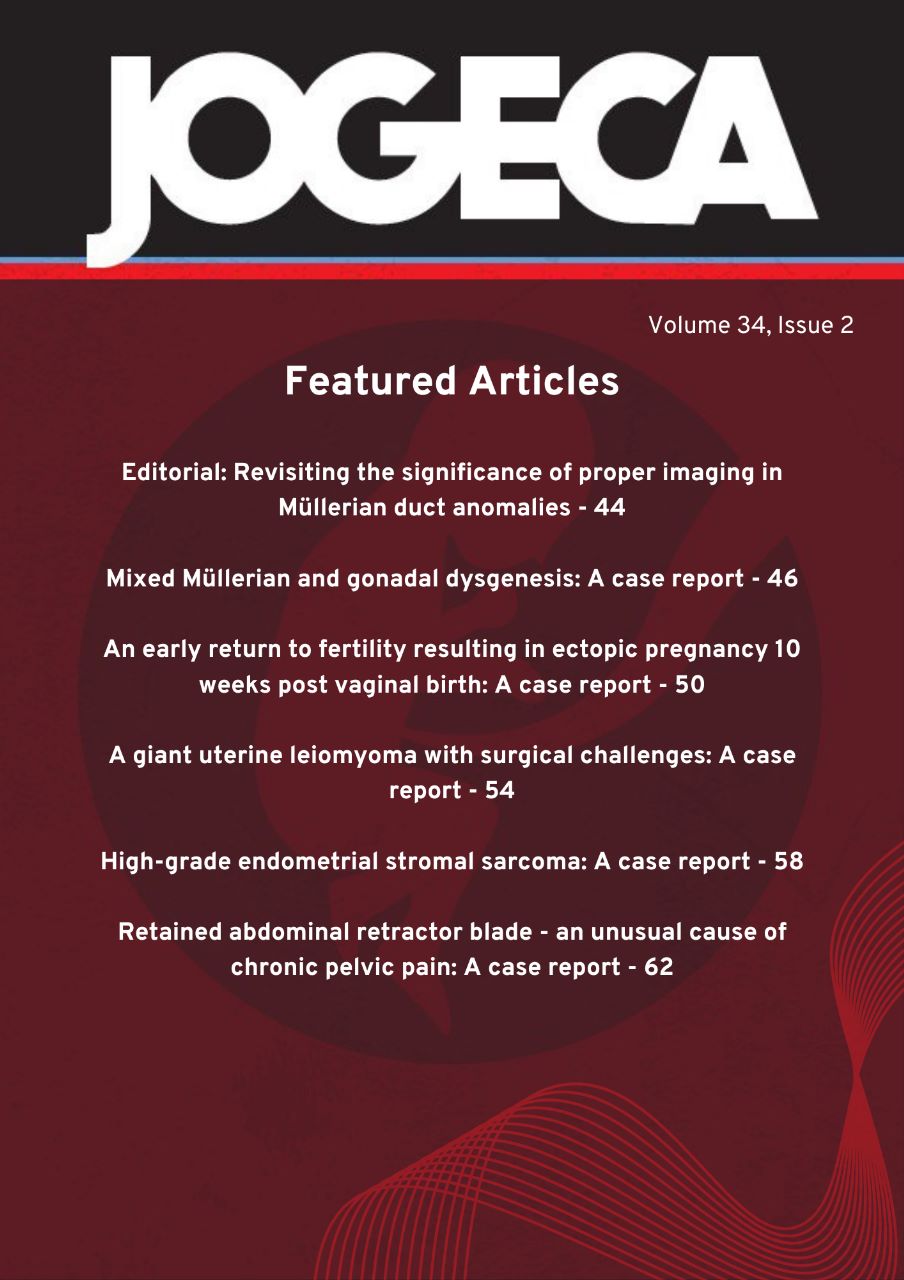Retroplacental hematoma: A case report
DOI:
https://doi.org/10.59692/jogeca.v36i1.142Keywords:
Retroperitoneal hematoma, Obstetric shock, Laparotomy, Ovarian vessels ruptureAbstract
Background: Retroperitoneal hematomas during pregnancy arising from ovarian vessels are rare. This
condition is usually associated with hemorrhagic shock and can lead to serious maternal-fetal morbidity
or mortality. Carrying a pregnancy to term when the condition is diagnosed in early pregnancy is
therefore not guaranteed.
Case presentation: A 39-year-old para 4+1 presented at 26 weeks of gestation with a 2-day history of
right lower abdominal pain after a fall on her farm two weeks before admission. She was anemic, and
abdominal ultrasound revealed a hypoechoic mass in the right lower quadrant of the abdomen, which,
upon explorative laparotomy, turned out to be a large nonexpanding zone III retroperitoneal hematoma.
Conservative management without opening the hematoma was performed, and she was serially imaged
to assess the etiology and to rule out any further bleeding. The patient carried the pregnancy to term and
delivered vaginally. Postpartum exploration of the abdomen during tubal ligation revealed resolution of
the hematoma.
Discussion: Retroperitoneal hematomas can occur spontaneously or can be caused by blunt or
penetrating trauma. Patients mostly present with abdominal pain, hypovolemia, or anemia. For
descriptive purposes, the retroperitoneum is divided into three zones: central, perirenal, and pelvic. For
spontaneous or blunt trauma hematomas in the pelvic zone, conservative management without opening
the hematoma is advised.
Conclusion: Retroperitoneal hematoma should be a differential diagnosis in a patient presenting with an
acute abdomen during pregnancy. Although associated with morbidity and mortality during pregnancy,
patients with this condition can still carry their pregnancy to term and deliver normally.
Downloads
Published
How to Cite
Issue
Section
Categories
License
Copyright (c) 2024 The authors.

This work is licensed under a Creative Commons Attribution 4.0 International License.




